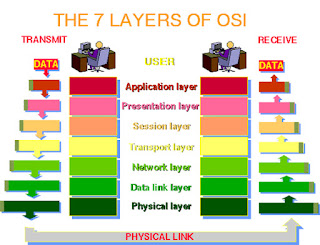The Open Systems Interconnection (OSI) model is a cornerstone of modern networking. It provides a universal framework for understanding and designing communication systems, enabling devices from different manufacturers to communicate seamlessly. But how did this revolutionary model come into existence, and how has it shaped the networking standards we rely on today? Let’s explore the history of the OSI model and its lasting impact.
The Origins of the OSI Model
The development of the OSI model was driven by the need for standardization in the burgeoning field of computer networking. During the 1970s, as computer networks began to proliferate, the lack of a universal standard created significant challenges:
Devices from different vendors were often incompatible.
Communication protocols varied widely, making integration complex.
Network development was hindered by proprietary systems.
To address these issues, the International Organization for Standardization (ISO) initiated the creation of the OSI model in the late 1970s.
Key Milestones in the OSI Model’s Development
1. Early Networking Challenges (1960s-1970s)
Networking technologies were in their infancy, and systems like ARPANET laid the groundwork for data communication. However, these systems were often isolated, with no overarching framework for interoperability.
2. Creation of the OSI Model (1977-1984)
The ISO and the International Telegraph and Telephone Consultative Committee (CCITT) collaborated to create a standardized model for network communication. In 1984, the OSI model was formally published as a seven-layer framework, offering a clear structure for network communication.
3. Adoption and Influence (1980s-1990s)
Although the OSI model itself was not widely implemented in its entirety, it influenced the development of key networking protocols and standards. For example, the Transmission Control Protocol/Internet Protocol (TCP/IP) model, which underpins the internet, adopted concepts from the OSI framework.
The Seven Layers of the OSI Model
The OSI model divides network communication into seven layers:
Application Layer - Interfaces with end-users and provides network services.
Presentation Layer - Formats and encrypts data for the application layer.
Session Layer - Manages communication sessions between devices.
Transport Layer - Ensures reliable data transfer.
Network Layer - Routes data between devices on different networks.
Data Link Layer - Handles physical addressing and error detection.
Physical Layer - Transmits raw data over physical media.
This modular approach simplifies network design, troubleshooting, and innovation.
Impact on Networking Standards
The OSI model has had a profound impact on networking in several ways:
1. Standardization
The OSI model provided a common language and framework for developers and engineers, enabling the creation of interoperable systems and protocols.
2. Protocol Development
Although TCP/IP became the dominant protocol suite, it adopted many concepts from the OSI model, including the layered approach to networking.
3. Education and Research
The OSI model remains a foundational teaching tool in networking courses, helping students and professionals understand the complexities of data communication.
4. Troubleshooting and Design
By isolating functions into specific layers, the OSI model simplifies network troubleshooting and the design of new technologies.
Challenges and Limitations
Despite its significance, the OSI model faced challenges:
The TCP/IP model became the de facto standard for the internet, overshadowing the OSI protocols.
The complexity of implementing all OSI protocols limited its adoption.
The OSI Model’s Legacy
The OSI model’s greatest contribution lies in its influence. While not all of its protocols became widespread, its conceptual framework shaped how networking is understood, taught, and implemented. Today, it remains a reference point for developing and analyzing network architectures.
Conclusion
The OSI model revolutionized the way we approach networking, offering a structured framework that continues to guide standards and practices. Its layered architecture not only simplifies communication but also fosters innovation in an ever-evolving digital landscape. Understanding the OSI model’s history and impact underscores its importance in shaping the networks that connect our world today.







 It doesn't matter that you want to become strong! There's no need to compare yourself to them! The others are themselves and you are yourself! The answer to your life are all within you!!
It doesn't matter that you want to become strong! There's no need to compare yourself to them! The others are themselves and you are yourself! The answer to your life are all within you!!
Keine Kommentare
Kommentar veröffentlichen